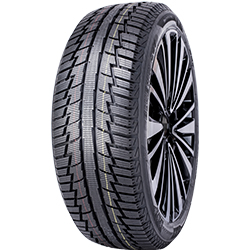


The tire bulge cannot continue to be driven because it can affect the stability of driving and is more likely to lose control under harsh driving conditions. In severe cases, it can cause tire blowouts on bumpy roads, high temperatures, sudden braking, or high air pressure.

But in some repair shops, some people may claim that smaller protrusions can be repaired through thermal repair, which involves fusing the original rubber to the tire wound through high-temperature vulcanization and cooling to solidify and seal the wound. In fact, this method does not fundamentally solve the problem, but rather thickens the rubber at the protrusions, which does not deny its effectiveness. However, long-term or high-speed use carries significant safety risks.
Moreover, hot repair requires high technical skills from the master. If the high-temperature curing time is too long, it can lead to sulfur exceeding the standard, tread brittleness, cracking, and surface bluing. A short period of time can cause sulfur deficiency, and the repaired area is prone to detachment. To prevent omissions or technical defects during the repair process, it is recommended not to open the tire bulges and to replace them immediately.
Tire bulges are caused by broken cords. The side of the tire is the thinnest part of the entire tire, and there is a curtain layer inside. There is no steel wire, only nylon threads supporting it to prevent the gas inside from blowing out. This is the main function of the curtain layer, which is the skeleton of the entire tire. When several wires break at the same time, only rubber is left to support this area, and the strength is very poor, quickly bulging.
If the bulge is relatively small, it can be repaired by hot patching. Hot patching, also known as fire patching, involves using high-temperature vulcanization to fuse raw rubber onto the tire wound and cool it to solidify, in order to seal the wound. Compared with internal patching, hot patching is more suitable for various types of tire injuries, and can even repair bulges and sidewall repairs. However, the technical requirements for hot patching will be relatively high for the master, because if the high-temperature vulcanization time is too long, excessive sulfur will be produced, resulting in severe tire surface brittleness, pattern grooves are prone to cracking, surface bluing, and other phenomena. If the time is too short, sulfur deficiency will occur, and the repaired parts are prone to detachment.